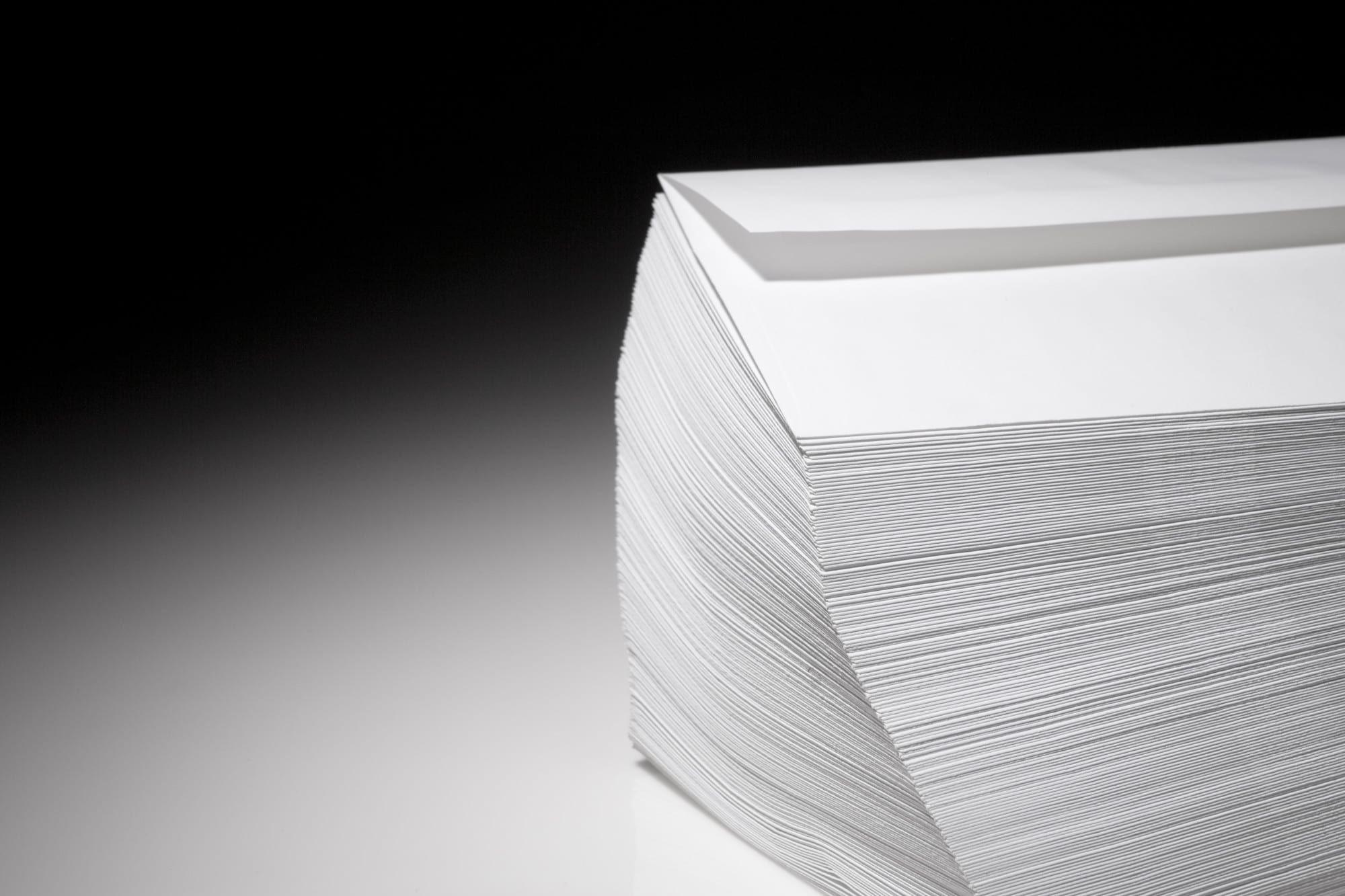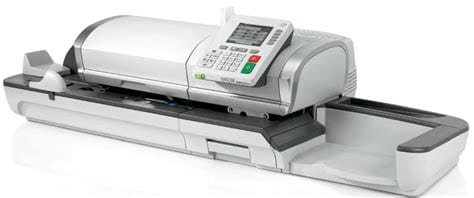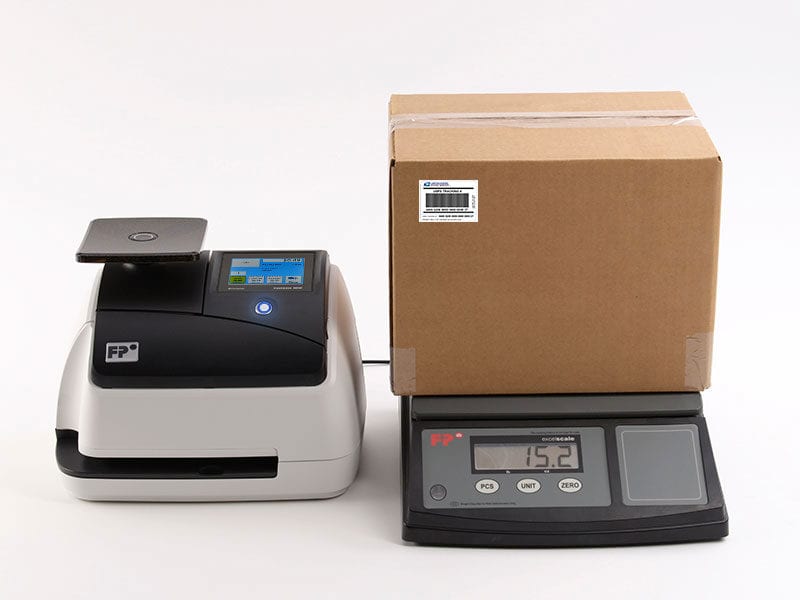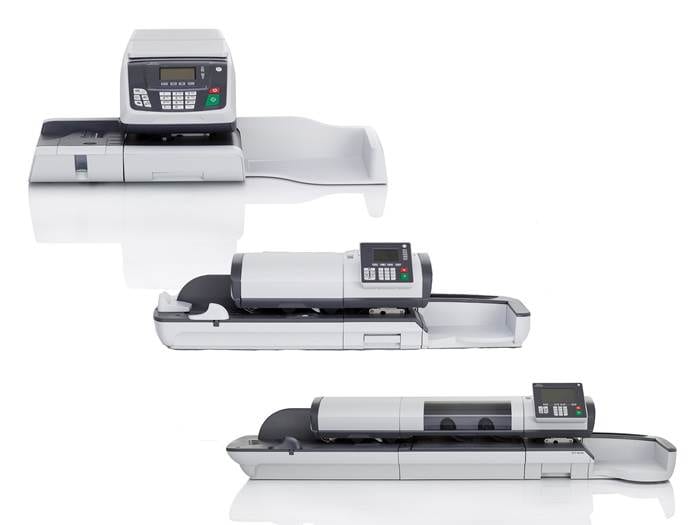
How Much Does It Cost to Rent a Postage Meter in 2023?
Whether you’re running a small business that sends out a few pieces of mail daily or a larger operation sending out hundreds of pieces of mail, postage meters can streamline your process. Postage meters are mailing machines that print postage directly onto mailpieces or labels, removing the need for individual stamps. The use of a postage meter can save businesses time and money. However, it’s important to understand the costs associated with this convenience. In this blog, we will discuss the costs of renting a postage meter, compare it to leasing options, and provide an understanding of average costs.
Compare PricesUnderstanding Postage Meter Costs
Postage meters can’t be purchased outright; instead, they are available for rent or lease from authorized dealers. The cost of renting a postage meter depends on several factors, including the model of the meter, the volume of mail you process, and the length of the rental or lease agreement. On average, the monthly rental cost for a postage meter suitable for a small business can range from $20 to $40. These smaller, low-volume machines are designed for businesses that send out less than a hundred pieces of mail per month. They often come with basic features like weighing capabilities, preset postage amounts, and digital displays.
If your business sends out larger volumes of mail, you might need to consider a more advanced, high-volume postage meter. These machines can handle thousands of pieces of mail per month and come with advanced features like automatic feeding, sealing, stacking, and dynamic weighing. The rental costs for high-volume postage meters typically range from $100 to $1000 per month, depending on the machine’s capabilities.
It’s important to note that the rental cost is not the only cost associated with postage meters. Other potential costs include:
- Ink and Supplies: Postage meters require proprietary ink cartridges, which can range from $50 to $300 each, depending on the model of the machine. Other supplies, like tape strips or labels, can also add to the cost.
- Maintenance and Insurance: Some rental agreements may include a service or maintenance agreement, which covers routine maintenance and repairs. If not included, maintenance services can add to the cost. Additionally, insurance may be required to cover any damage or loss to the machine.
- Postage: The actual postage costs are separate from the rental costs. The postage is typically prepaid and loaded onto the machine digitally.

Leasing a Postage Meter
Another option businesses consider is leasing a postage meter. Like renting, leasing a postage meter involves making regular payments to use the machine, typically under a longer-term contract.
The cost to lease a postage meter is generally comparable to the rental costs, ranging from around $20 per month for basic models to several hundreds or even a thousand dollars per month for high-end models. However, lease agreements usually extend over several years and often include clauses for maintenance and service.
Whether you choose to rent or lease a postage meter may depend on your business’s specific needs. Renting might be a better option for businesses with variable mail volumes, as rental agreements often offer more flexibility to upgrade or downgrade the machine. On the other hand, leasing might be more suitable for businesses with consistent, high-volume mailing needs, as lease agreements often come with better rates for long-term commitments.
Renting or leasing a postage meter can be a cost-effective solution for businesses that regularly send out mail. While the costs can vary significantly based on your specific needs, on average, you can expect to pay anywhere from $20 per month for a basic, low-volume machine to up to $1000 per month for a high-end, high-volume machine. Additional costs for ink, supplies, maintenance, and actual postage also need to be factored in. As always, it’s crucial to assess your business’s specific mailing needs and budget before deciding on a postage meter rental or lease.
Compare PricesComparing Postage Rates to Postage Meter Rental Rates: Making the Economical Choice
When considering the cost-effectiveness of renting a postage meter, it’s important to compare not just the rental or lease costs, but also the potential savings on postage rates. Businesses that regularly send mail can often realize significant savings by using a postage meter instead of traditional stamps. Let’s explore how postage rates compare to postage meter rental rates.
Postage Rates
As of my knowledge cutoff in September 2021, the cost of a standard First-Class Mail stamp for a 1-ounce letter was $0.55. If your business sends larger or heavier mailpieces, or if you’re sending mail internationally, the costs can add up quickly. Additionally, each time you need to apply postage to a piece of mail, you have to manually affix a stamp, which can be time-consuming for businesses sending large volumes of mail.
Postage Meter Rates
One of the significant benefits of using a postage meter is the potential savings on postage costs. The United States Postal Service (USPS) offers discounted rates for postage printed using a postage meter. As of my knowledge cutoff in September 2021, the metered rate for a 1-ounce First-Class Mail letter was $0.51, a saving of $0.04 per letter compared to using traditional stamps. While this may seem small, for a business sending hundreds or thousands of letters per month, the savings can be substantial.

Additionally, postage meters come with integrated scales, allowing you to accurately weigh your mail and apply the exact postage needed. This eliminates the risk of overpaying for postage, which can occur when you’re estimating postage using stamps. Moreover, postage meters allow for quicker processing of mail, saving businesses valuable time and increasing productivity. They can print postage directly onto envelopes or labels, eliminating the need to manually affix stamps.
Making the Comparison
When comparing postage rates to postage meter rental rates, it’s important to consider both the potential savings on postage and the increased efficiency. If you’re a small business owner sending a handful of letters per month, the savings on postage may not offset the rental costs of a postage meter. However, if you’re regularly sending larger volumes of mail, the combined savings on postage and the time saved can quickly outweigh the rental or lease costs.
For example, if you’re renting a basic postage meter for $20 per month and you send 500 letters per month, the savings on postage alone ($0.04 saving per letter x 500 letters) would be $20, effectively covering the rental cost. Any additional mail sent would result in direct savings.
While the upfront costs of renting or leasing a postage meter may seem high, the potential savings on postage rates and increased efficiency can make it a cost-effective choice for businesses that regularly send mail. The key is to understand your business’s specific mailing needs and volumes and to do the math to ensure that a postage meter is the right choice for your business.
Compare PricesTop Postage Meter Machines in 2023
The right postage meter can streamline your mail processing, saving time and money. Here are some of the top-rated postage meter machines available in 2023, which provide a range of features to cater to various business sizes and mailing needs:
- Pitney Bowes SendPro® C Series: This range offers various models designed for different volumes of mailing needs, from low to high. All models come with a built-in scale, automatic feeding, and tracking features. They also offer discounts on USPS mail and packages, making them a cost-effective choice.
- FP PostBase Mini: This is a compact and affordable postage meter, ideal for small businesses or home offices. It features a semi-automatic letter feed and integrated scale. It’s a straightforward, easy-to-use machine that can handle small volumes of mail efficiently.
- Quadient IN-600 Series: The IN-600 Series by Quadient is well-suited for businesses with medium to large mail volumes. The series offers advanced features, including automatic feeding and sealing, dynamic weighing, and personalized printing.
- Data-Pac Mailing Systems: Data-Pac offers a variety of postage meters to accommodate businesses of all sizes. Their machines, such as the Curve and the DIB, are known for their high speed and advanced features like mixed mail feeding, inline weighing, and inkjet printing technology.
- Hasler WJPRO: Designed for high-volume mailers, the Hasler WJPRO can process up to 15,000 envelopes per hour. It includes features like automatic thickness adjustment, dynamic weighing, and a variety of imprinting and labeling options.
- Pitney Bowes DM Series: This series includes various models suitable for small to high-volume mailing needs. All models in the series offer digital connectivity, integrated weighing, and cost accounting features. The higher-end models also include automatic feeding and sealing capabilities.
- Quadient IS-280 iMeter: This compact and quiet machine is suitable for small businesses or home offices. It comes with a 2lb integrated scale, customizable printing, and high-speed digital connectivity.
- FP PostBase Vision Series: The PostBase Vision series is a semi-automatic to automatic postage meter line designed for mid to high-volume mailers. Key features include color touchscreens, anti-skew rollers, integrated scales, and customizable printing.

Choosing the right postage meter machine can significantly improve your mail processing efficiency and potentially save your business money. Whether you’re a small business or a larger operation, the options listed above provide a range of solutions to cater to your specific needs. Remember to consider factors like mail volume, processing speed, automation features, and cost when choosing a postage meter for your business.
Understanding the Regulations of Postage Meters
Postage meters are subject to a variety of regulations because they essentially print money in the form of postage. The misuse of a postage meter can lead to substantial fines or even criminal charges. Therefore, it’s critical to understand the legal considerations and regulations around the use of these machines.
Compare PricesThe United States Postal Service (USPS) Regulations
In the United States, the United States Postal Service (USPS) is the authority that oversees and regulates the use of postage meters. Here are some key regulations:
- Purchase vs Lease: Postage meters can’t be purchased outright; they must be rented or leased from a USPS-authorized provider. This regulation helps ensure that all postage meters in circulation are accounted for and used correctly.
- Postage Payment: Postage printed by a postage meter is prepaid. That means users must fund their postage meter accounts in advance, either by check, electronic funds transfer, or credit card.
- Refilling Postage: Postage meters can only be refilled (reset with a higher postage value) by connecting to the USPS system via the internet or a dedicated phone line, ensuring accurate record-keeping and billing.
- Maintenance and Repairs: Only authorized providers or their appointed agents can perform maintenance and repairs on postage meters. Tampering with a meter can result in hefty fines.
- Relocation and Transfer: If you plan to move your postage meter to a different location or want to sell your business, you must inform your provider. They, in turn, will inform the USPS, ensuring all machines are accounted for at all times.
- Mail Requirements: Mail printed with a postage meter must meet certain requirements. For example, the printed postage must be legible, and the mailing date must be accurate. If the mail is not sent on the date printed on the meter stamp, a new stamp with the correct date must be printed.
- Returning the Meter: When your lease ends, or if you no longer need your postage meter, you must return it to the provider. Providers are required to periodically inspect and retire old or unused meters.
Compliance is Key
Compliance with these regulations is crucial. Misusing a postage meter can lead to serious penalties, including termination of your lease agreement, fines, and even criminal charges in severe cases. Always consult your provider or the USPS if you’re unsure about any aspect of using your postage meter.
Postage meters can bring many efficiencies to your mail-handling process, but their use comes with certain responsibilities. By understanding the regulations surrounding postage meters, you can make the most of their benefits while staying compliant with the rules. When in doubt, it’s always best to refer to the USPS’s guidelines or reach out to your provider for clarification.

The Benefits of Using a Postage Meter for Small Businesses
A postage meter, also known as a postage machine, can be an invaluable asset for small businesses that regularly send mail. The benefits of these devices are manifold, not least of which is the convenience and efficiency they bring to your mailing process. In this section, we’ll delve into the specific benefits a small business could gain from using a postage meter.
Compare PricesTime and Cost Efficiency
One of the most apparent benefits of a postage machine is the time and cost efficiency it offers. If your business regularly sends a high volume of mail pieces, the task of manually affixing stamps can be quite time-consuming. A postage meter expedites this process, allowing you to handle your mailing needs in-house quickly and efficiently.
The rate protection guarantee provided by many postage meter companies is another significant benefit. As postage rates increase, your rental fees and monthly costs remain the same. This protection allows small businesses to budget their mailing expenses more effectively.
Convenience
Postage meters come with preloaded postage, eliminating the need to make frequent trips to the post office to purchase stamps. Also, with a postage meter, you can weigh your mail piece and print the precise postage required, right from the comfort of your office. This convenience can save small businesses a great deal of time and hassle.
Professionalism
Printed postage from a meter looks more professional than a traditional stamp. It can add credibility to your business and enhance your image in the eyes of your customers and partners. Also, some postage meter models, such as those offered by FP Mailing Solutions, allow you to print customized messages or your company logo along with the postage, further increasing your business’s visibility and brand awareness.
Accuracy and Control
A postage meter provides more accuracy and control over your mailing expenses. These devices come with integrated scales that allow you to weigh each mail piece and print the exact postage needed. This feature eliminates the risk of over- or under-paying for postage.
Software Updates and Support
Most modern postage meters come with software that updates automatically whenever there are changes to postage rates, ensuring that you’re always using the current rates. Postage meter companies often provide technical support as part of the rental price, helping you troubleshoot any issues and keeping your mailing operations running smoothly.

Is a Postage Meter a Good Idea for Small Businesses?
In conclusion, if your small business sends out a significant amount of mail, investing in a postage meter can be a good idea. The time and cost efficiencies, convenience, professional appearance, accuracy, and support provided by postage meter companies are all compelling reasons to consider adding a postage meter to your operations.
However, like any investment, it’s essential to weigh the potential benefits against the rental fees and monthly costs. Shop around, compare offerings from different companies, and select a plan that fits your business’s needs and budget.
Compare PricesA Step-by-step Guide to Using a Postage Meter
Once you’ve decided that a postage meter is a good fit for your business, it’s essential to understand how to set it up and use it effectively. Here is a practical step-by-step guide to help you get started:
Step 1: Select a Postage Meter and Set Up the Lease
The first step is to choose a postage meter that suits your business needs and set up a lease with the provider. This process will involve evaluating different models, comparing rental fees and terms, and signing a lease agreement.
Step 2: Install the Postage Meter
Once you’ve signed the lease and received your postage meter, the next step is to install it. This usually involves unboxing the device, connecting it to a power source, and setting up a connection to the internet or a dedicated phone line (depending on the model) for postage refills and software updates. Most providers will offer an installation guide or customer support to assist with this process.
Step 3: Fund Your Postage Meter
Before you can start printing postage, you’ll need to fund your postage meter. This involves setting up an account with the provider, adding funds via check, credit card, or electronic funds transfer, and then downloading the postage onto your meter.
Step 4: Set Up Your Meter Preferences
Most postage meters allow you to set preferences, such as commonly used postage amounts, mail class (First-Class, Priority Mail, etc.), and even custom messages or logos to print along with the postage. Setting up these preferences can save you time when processing your mail.
Step 5: Process Your Mail
Now you’re ready to start processing your mail. Here’s a basic guide on how to do this:
- Weigh Your Mail: Place your mail piece on the integrated scale to determine its weight.
- Select the Postage: Based on the weight and mail class, the meter will calculate the correct postage. If you have set preferences, you can select one of these, or you can manually input the postage.
- Print the Postage: Feed your mail piece or label into the meter following the machine’s instructions, and it will print the postage.
- Send Your Mail: Your mail is now ready to be sent. You can drop it in any mailbox, give it to your mail carrier, or take it to the post office.
Step 6: Refill and Update
Remember to regularly check your postage balance and refill it as needed. Also, ensure that your meter’s software is up to date to benefit from the latest features and postage rates.

While using a postage meter may seem complex at first, it’s actually quite straightforward once you get the hang of it. Following these steps will help you set up and use your postage meter effectively, saving your business time and money on mailing operations. Always refer to your specific model’s user manual for detailed instructions, and don’t hesitate to reach out to your provider’s customer support if you need assistance.
The Environmental Impact of Postage Meters
Sustainability has become a key focus for businesses across the globe. From reducing energy consumption to minimizing waste, businesses are looking for ways to lessen their environmental impact. One area where businesses can make a substantial difference is in their mailing operations. This is where postage meters come into play. In this section, we’ll discuss how using a postage meter could help reduce a business’s environmental footprint.
Reduction in Transportation Emissions
One of the significant environmental benefits of using a postage meter is the reduction in transportation emissions. Traditional mailing processes often require frequent trips to the post office to buy stamps or send mail. These trips contribute to fuel consumption and CO2 emissions.
By using a postage meter, businesses can print postage on-site and reduce the need for these trips. Additionally, because postage meters allow for exact postage, businesses can avoid overpaying for postage and adding unnecessary weight to their mail, which in turn reduces emissions from transportation.
Minimization of Waste
Postage meters can also help minimize waste. By printing postage directly on envelopes or labels, businesses eliminate the need for adhesive stamps. Stamps not only require paper and adhesive materials for their production, but they also generate waste when they’re peeled off their backing.
Moreover, postage meters often come with features that optimize the use of ink, and some models even have energy-saving modes to reduce electricity consumption.
Compare PricesEncouraging Digital Alternatives
While it’s not a direct effect of the postage meter itself, having a meter can also lead businesses to consider whether each piece of mail they send is necessary. As businesses track their mailing costs more accurately with a postage meter, they may realize that some communications could be handled digitally, reducing the need for physical mail and subsequently saving paper and reducing emissions.
Responsible Disposal
Lastly, when a postage meter reaches the end of its life, it’s important to dispose of it responsibly. Many postage meter companies have programs in place to recycle or responsibly dispose of their machines, further reducing the environmental impact.
Using a postage meter can be a part of a business’s strategy to reduce its environmental footprint. From reducing transportation emissions and waste to encouraging digital alternatives, postage meters can support more sustainable mailing practices. As always, it’s crucial to consider these benefits in the context of your overall business operations and environmental goals.

Digital Postage Meters vs Traditional Postage Meters: A Comparative Analysis
As technology advances, the way we handle everyday tasks, including mailing, has evolved. The advent of digital postage meters has revolutionized the way businesses manage their mailing operations. In this section, we’ll compare digital postage meters with traditional postage meters, discussing their pros and cons to help you make an informed decision.
Traditional Postage Meters
Traditional postage meters have been in use for decades. They mechanically print postage directly onto mail pieces or labels. Here are some key points to consider:
Pros:
- Reliability: These machines have been around for a long time and have proven to be reliable and efficient for handling mailing needs.
- Physical Proof of Postage: Traditional postage meters physically print the postage onto the mail, providing a visible proof of postage.
Cons:
- Limited Capabilities: Traditional meters may not have the same range of features that digital meters offer, such as automatic rate updates or the ability to track spending in real-time.
- Requires Manual Updates: If postage rates change, traditional meters often require manual updates. This can be time-consuming and potentially lead to errors if not done correctly.
Digital Postage Meters
Digital postage meters utilize modern technology to offer more advanced features and convenience. They are connected to the internet and can download postage and updates digitally.
Pros:
- Advanced Features: Digital meters often come with advanced features like automatic rate updates, integrated scales for accurate weighing, detailed spending reports, and the ability to print custom designs or messages along with postage.
- Easy Updates and Refills: Because they’re connected to the internet, digital meters can automatically update postage rates and download postage refills, saving time and reducing the risk of errors.
- Cost Tracking: Digital postage meters allow businesses to track their postage costs in real-time, which can be beneficial for budgeting and cost management.
Cons:
- Dependent on Internet Connection: Because they’re digital, these meters require a reliable internet connection to function optimally. Without internet access, some of their functionalities may be limited.
- Higher Cost: Digital meters often come with higher rental or lease costs due to the advanced features they offer.
Whether a digital postage meter or a traditional one is the right choice for your business will depend on your specific needs, budget, and the volume of mail you handle. A traditional meter might be sufficient for small businesses with basic mailing needs, while a digital meter could be a game-changer for businesses that require more advanced features and can benefit from real-time tracking and automatic updates. Always consider these factors and consult with postage meter providers to make the best decision for your business.

Maintaining and Cleaning Your Postage Meter: Ensuring Optimal Performance and Longevity
Just like any piece of machinery, a postage meter requires regular maintenance and cleaning to keep it working optimally and ensure its longevity. In this section, we’ll provide some practical tips and guidance on how to properly maintain and clean your postage meter.
Compare PricesRegular Inspection
It’s crucial to regularly inspect your postage meter to identify any potential issues early on. Keep an eye out for any unusual noises, error messages, or declines in performance. If you spot anything unusual, consult your user manual or contact your provider’s customer support for guidance.
Cleaning the Print Head
The print head is a critical component of your postage meter. It’s responsible for printing the postage onto your mail or labels. Over time, ink can build up on the print head, affecting the quality of the print. Here’s how to clean it:
- Power Off the Machine: Always switch off your postage meter before cleaning the print head to prevent any accidental printing or damage.
- Remove the Print Head: Refer to your user manual for instructions on how to safely remove the print head.
- Clean the Print Head: Use a soft, lint-free cloth dampened with warm water to gently clean the print head. Never use alcohol or other harsh cleaning agents as they could damage the print head.
- Let it Dry: Allow the print head to dry completely before reinstalling it to prevent any damage.
- Reinstall the Print Head: Once dry, reinstall the print head following your user manual’s instructions.
Cleaning the Feed Deck
The feed deck, where you insert your mail or labels for printing, can accumulate dust or debris over time. Regularly cleaning the feed deck can prevent jams and ensure smooth operation. Use a soft, dry cloth to wipe the feed deck and keep it free from dust and debris.
Replacing Ink Cartridges
Regularly check your ink levels and replace the ink cartridges as needed. Running your postage meter with low ink can damage the print head and affect the quality of the print. Always use ink cartridges recommended by your provider to ensure the best performance and avoid damaging your machine.
Regular Software Updates
For digital postage meters, it’s essential to regularly update your software. Software updates often include bug fixes, new features, and updates to postage rates. Your postage meter should automatically download and install updates, but it’s a good idea to manually check for updates periodically to ensure your machine is up to date.
Professional Maintenance
While regular cleaning and inspection can help keep your postage meter in good shape, professional maintenance is recommended for more complex issues or routine servicing. Many providers offer maintenance services as part of the rental or lease agreement. Always consult with a professional if you’re unsure about any aspect of maintaining your postage meter.
Compare PricesMaintaining and cleaning your postage meter is an essential part of ensuring its optimal performance and longevity. By following these tips and guidelines, you can keep your postage meter in top shape and continue to streamline your mailing process effectively. Always refer to your specific model’s user manual for detailed maintenance instructions, and don’t hesitate to reach out to your provider’s customer support if you need assistance.

Making the Most of Your Postage Meter
From basic machines for startups to high-capacity models designed for high volumes of mail, postage meters are an asset to businesses of all sizes. Utilizing the features and benefits these machines offer can revolutionize your mail management processes.
The Power of an Automatic Feeder
One feature that’s particularly beneficial for businesses dealing with high volumes of mail is the automatic feeder. This function eliminates the need for manually feeding each piece of mail into the machine, which can be incredibly time-consuming. With an automatic feeder, you simply load the stack of mail, and the machine takes care of the rest. This feature is generally found on more advanced USPS postage meters and can be a game-changer for businesses aiming to increase efficiency.
Attracting New Customers
Postage meters can even play a role in attracting new customers. Many meters allow for custom messages or logos to be printed alongside the postage. This feature gives businesses an additional opportunity to enhance brand visibility and make a positive impression on recipients.
Understanding Postage Rates and Classes of Mail
To make the most of your postage meter, it’s important to understand USPS postage rates and the different classes of mail. For example, First-Class Mail is ideal for lightweight packages and envelopes, whereas Priority Mail offers faster delivery times. Your postage meter can apply postage for all classes of mail, helping you choose the most cost-effective option for each item.
Rate Freeze Benefits
Many postage meter providers offer a rate freeze, which can be a significant advantage, particularly in times of rising postage costs. With a rate freeze, your rental fee remains the same for a specified period, regardless of postage rate increases. This allows businesses to plan their mailing expenses and provides some immunity against rate hikes.
Federal Law Compliance
Lastly, it’s important to remember that federal law regulates the use of postage meters. Businesses must comply with these regulations, which cover aspects like machine acquisition, usage, maintenance, and disposal. By adhering to these rules, businesses can avoid penalties and ensure a smooth mailing process.
Getting a Custom Quote
Given the variety of models and features available, it’s advisable for businesses to seek a custom quote from postage meter providers. A custom quote considers your specific needs, such as your average mail volume and desired features, to offer the most cost-effective solution. This ensures that you’re only paying for what you need and not overpaying for unnecessary features.
Investing in a postage meter can streamline your mail-handling process, saving your business time and money. From automatic feeders to custom quotes, understanding the available features and benefits can help you select the right machine and use it effectively. Always ensure compliance with federal laws governing the use of this mailing equipment and consider reaching out to a professional for a custom quote tailored to your specific needs. Whether you’re a small startup or a business handling high volumes of mail, a postage meter can be a powerful tool in your arsenal.
Compare Prices
Leave a Reply